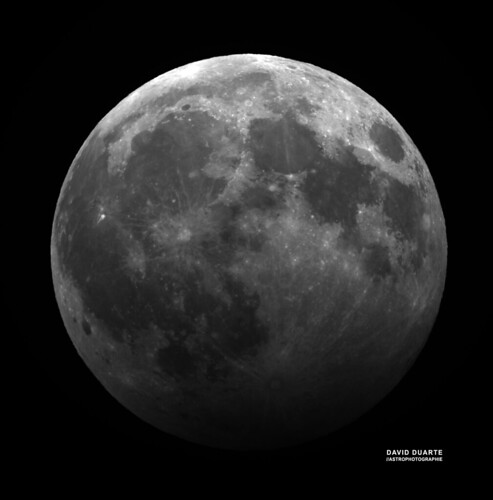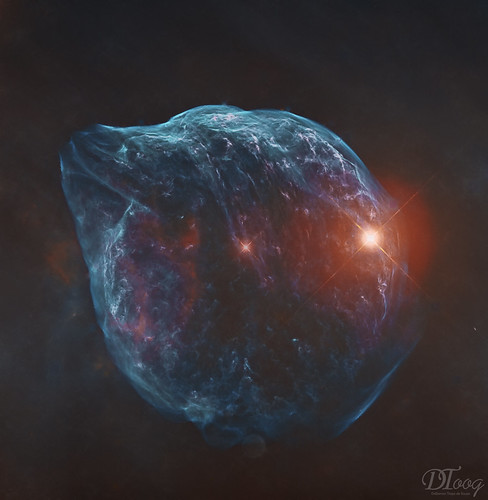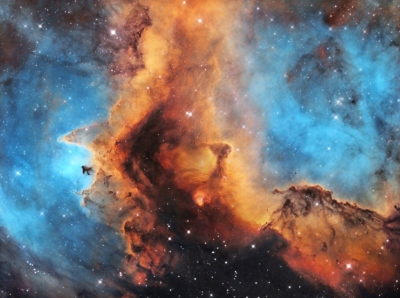Beautiful, Maxime!Lighty wrote: ↑Thu Jan 09, 2020 7:26 pm NGC 1499 - California in colors
A known nebula but nevertheless rather difficult to photograph, all in nuances, volumes, and "blur / sharp" effect.
Located in the constellation of Perseus, 70 light years long and +/- 1500 light years away from us, it is a very beautiful veil of interstellar gas which emits light in the near infrared. This large "cloud" is illuminated (or in gravitational interaction) by / with the blue star Menkib, in the top center of the image, and "above" the nebula.
Picture processing was very sensitive to treat. It may be possible to give it a lot of different shades and gradations, the whole thing is to remain consistent with the original colors.
Here, I wanted to emphasize its richness of nuances, especially on the "lower part" which has more yellow hues, rather than staying on a gradient of red and magenta only. The clouds around the nebulae are also present.
1st ever HaRGB image I was able to take, at the end of 2019.
Exifs & gear :
Nikon D750 Astrodon
TS Optics Imaging Star 71/347 f/4.9
Baader Ha 7nm 2" and Astronomik CLS 2" filters
Astrotrac TT320X AG
Berlebach UNI Astro 4 Custom
Ha : 175x240s - good sky conditions
RVB : 65x180s - average sky conditions
+DOF
Pre-processing and stacking : Siril 0.9.12
Processing : Photoshop CC 2017
High resolution (recommended) :
https://www.astrobin.com/pvdnpy/
Copyright: Maxime Oudoux
https://maximeoudouxphotographie.fr
NGC1499-HaRVB.jpg
An aside: Menkib is an O-type star, and its torrential output of ultraviolet photons is kicking electrons from their usual shells in hydrogen atoms (i.e., the hydrogen is ionized). When an electron "falls back" to its normal shell, the excess energy that kicked the electron out of its normal position in the first place is radiated back into space as a photon of red light. So it is Menkib that is ionizing the California Nebula and making it glow red. Menkib is also a runaway star, heading directly for the California Nebula, and I guess its high speed and very strong stellar winds act like a plow and give the California Nebula its arc-like shape.
Ann











